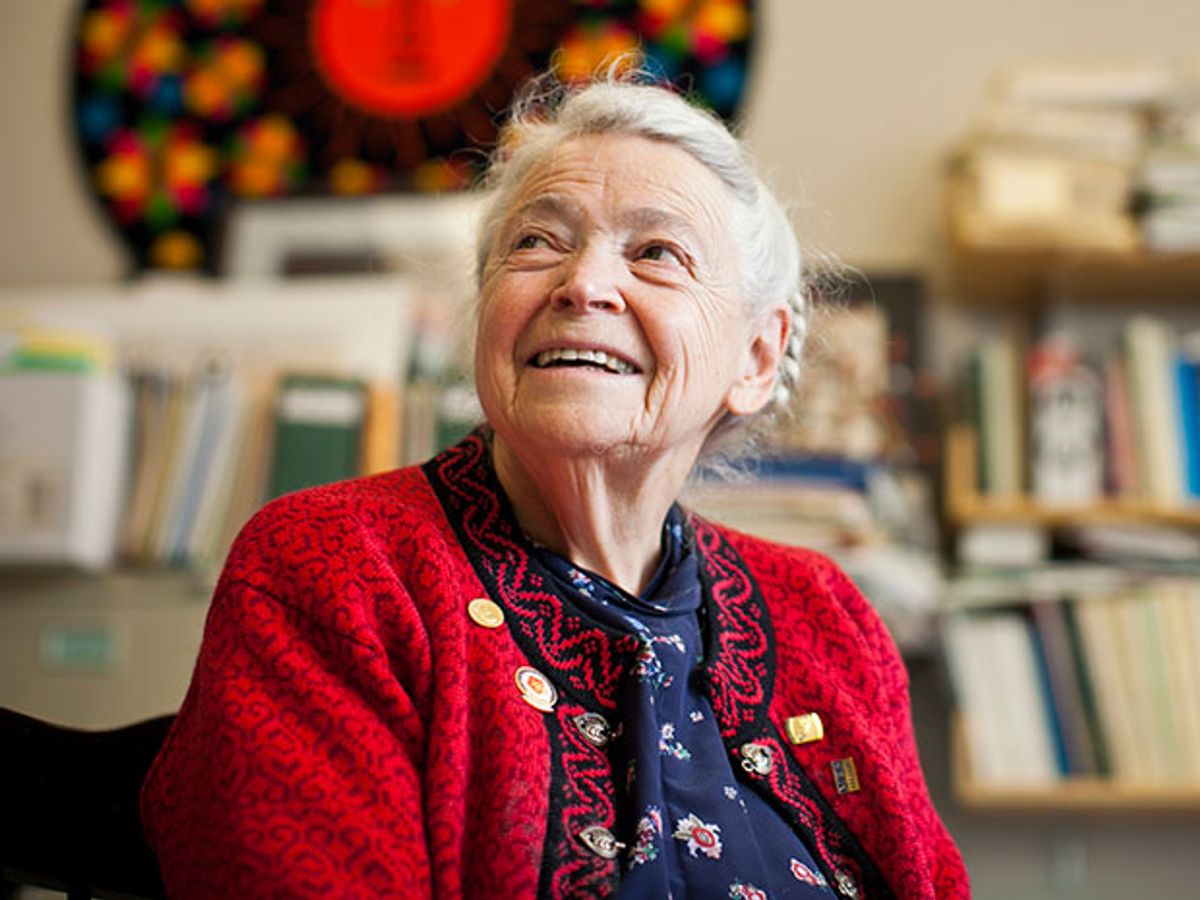This week, the nanoscale withdrew from the larger world just a little. Mildred Dresselhaus, emerita professor of physics and materials science at MIT and Presidential Medal of Freedom winner (as well as IEEE Medal of Honor recipient), died on Monday at the age of 86.
Called the “Queen of Carbon Science,” Dresselhaus pioneered the study of carbon nanostructures at a time when studying physical and material properties of commonplace atoms like carbon was out of favor. Her visionary perspectives on the sixth atom in the periodic table—including exploring individual layers of carbon atoms (precursors to graphene), developing carbon fibers stronger than steel, and revealing new carbon structures that were ultimately developed into buckyballs and nanotubes—invigorated the field.
“Millie Dresselhaus began life as the child of poor Polish immigrants in the Bronx; by the end, she was Institute Professor Emerita, the highest distinction awarded by the MIT faculty. A physicist, materials scientist, and electrical engineer, she was known as the ‘Queen of Carbon’ because her work paved the way for much of today's carbon-based nanotechnology,” MIT president Rafael Reif said in a prepared statement.
Friends and colleagues describe Dresselhaus as a gifted instructor as well as a tireless and inspired researcher. And her boundless generosity toward colleagues, students, and girls and women pursuing careers in science is legendary.
“Everything I do, I’m aware that Millie has her imprint on me,” said H. Eugene Stanley, director of the Boston University Center for Polymer Studies, when interviewed in 2015 for an IEEE Spectrum profile of Dresselhaus. “She’s unbelievably kind. She’s always helping everybody. She runs seminar series, big and little. And she’s a woman of high principles.”
Professor Gang Chen, now head of MIT’s mechanical engineering department, recalls first meeting her in 1996. “At the time, I did not know anything on thermoelectrics, and I was surprised to hear she knew my name, maybe from many of her activities including knowing my Ph.D. advisor,” he said. “It was my first time writing a big proposal, and her beautiful handwriting (although difficult to read for me at the beginning) and careful editing of the proposal truly impressed me, even if I had not met her. In 1997, I met her in person at UCLA during our MURI program kickoff meeting, where I moved to take an associate professor position. She was so approachable, engaging in detailed scientific discussions, and caring. These impressions only get reinforced more as our collaboration continues.”
In 1963, Dresselhaus began her own career studying carbon by publishing a paper on graphite in the IBM Journal for Research and Development, a foundational work in the history of nanotechnology. To this day, her studies of the electronic structure of this material serve as a reference point for explorations of the electronic structure of fullerenes and carbon nanotubes. Coauthor, with her husband Gene Dresselhaus, of a leading book on carbon fibers, she began studying the laser vaporation of carbon and the “carbon clusters” that resulted. Researchers who followed her lead discovered a 60-carbon structure that was soon identified as the icosahedral “soccer ball” molecular configuration known as buckminsterfullerene, or buckyball. In 1991, Dresselhaus further suggested that fullerene could be elongated as a tube, and she outlined these imagined objects’ symmetries. Not long after, researchers announced the discovery of carbon nanotubes.
When she began her nearly half-century career at MIT, as a visiting professor, women consisted of just 4 percent of the undergraduate student population. So Dresselhaus began working toward the improvement of living conditions for women students at the university. Through her leadership, MIT adopted an equal and joint admission process for women and men. (Previously, MIT had propounded the self-fulfilling prophecy of harboring more stringent requirements for women based on less dormitory space and perceived poorer performance.) And so promoting women in STEM—before it was ever called STEM—became one of her passions. Serving as president of the American Physical Society, she spearheaded and launched initiatives like the Committee on the Status of Women in Physics and the society’s more informal committees of visiting women physicists on campuses around the United States, which have increased the female faculty and student populations on the campuses they visit.
Dresselhaus won many of the scientific and technical awards that an outstanding researcher in her field could have won, including the Kavli Prize, the Enrico Fermi Award, the IEEE Medal of Honor, the Medal of Science, the Presidential Medal of Freedom, and membership in the National Academy of Sciences and the National Academy of Engineering.
As it happens, less than two weeks before her death, General Electric released a web video imagining a world in which Dresselhaus earned the celebrity and acclaim normally accorded to movie stars and musicians. “A Millie Dresselhaus doll!” a girl exclaims after she opens her birthday present, as a narrator asks, “What if we treated great female scientists like they were stars?” Dresselhaus, pausing to give strangers the opportunity to take a selfie with her, carries herself through the video with the warmth and gentle humor she showed throughout her remarkable life.
“My first impression is like my last impression,” said Jean-Paul Issi, emeritus professor of physics at the Catholic University of Louvain, in Belgium, in a 2015 interview. “I was very impressed.”
Margo Anderson is the news manager at IEEE Spectrum. She has a bachelor’s degree in physics and a master’s degree in astrophysics.



